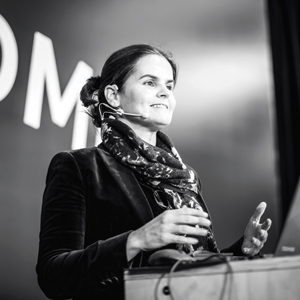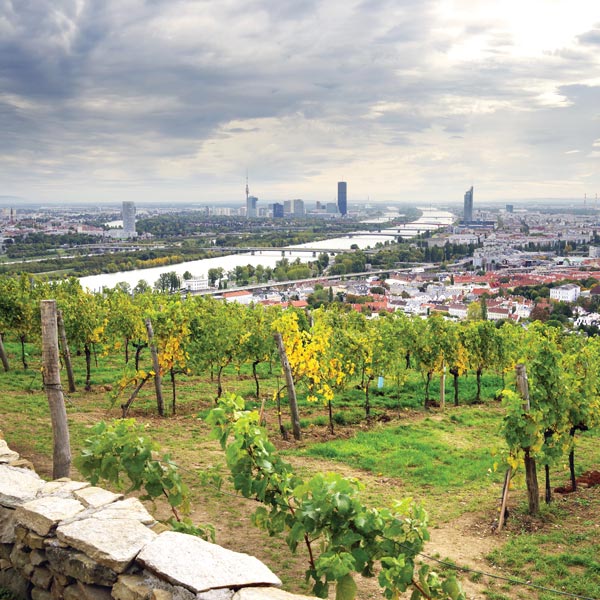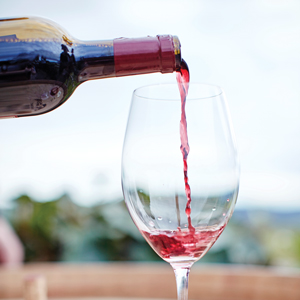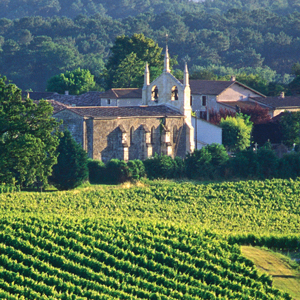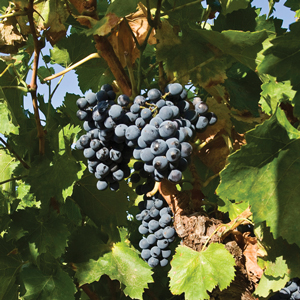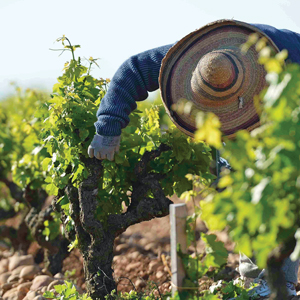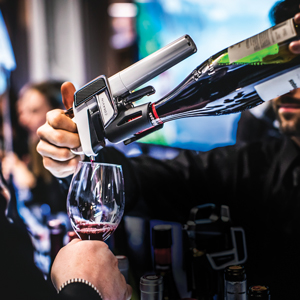SOMM360 is a platform for every sommelier seeking perfection through continuous education and training for competition.
Get the latest info about Somm360
© 2018 SOMM360


This master class was designed to bring SOMM360 participants up to speed on exciting developments in Australian winemaking, showcasing Chardonnay and Pinot Noir from the country’s cool-climate regions. It was presented by Mark Davidson, head of education for Wine Australia’s North American division, and by Michelle Bouffard, a Montreal-based sommelier, author and educator.
A brief history
Australia has a long history of winemaking, even if the vines were originally imported from Europe. James Busby, considered the father of Australia’s wine industry, brought a collection of 360 noble grape vine stocks from France and Spain in the 1830s. Chardonnay and Pinot Noir stocks were part of that shipment. But, if Chardonnay became the most popular white varietal because it adapted easily in almost all of Australia’s wine regions, it was Shiraz (Syrah) that became the emblematic red varietal. Pinot Noir struggled initially in the warmer climates where the original plantings were. Mark Davidson told sommeliers and wine professionals at SOMM360 that when Australian wines broke out on the international scene in the 1980s and ʼ90s, Chardonnay wines led the charge. “Most of what we had in those days was warm-climate Chardonnay: big, full-bodied, concentrated, rich, impressive in its palate impact. But, as you all know, that gets a bit tiring, so we have had a dramatic shift away from that.” He says that, over the past 30 years, winemakers have sought out cool-climate regions to develop the full potential of Chardonnay and Pinot Noir.
Victoria’s other cool-climate regions
The Mornington Peninsula is located about 75 kilometres south of Melbourne. According to Michelle Bouffard, the peninsula’s cool maritime climate is perfect for growing Pinot grapes. “This is Pinot country and, if other regions like Margaret River are recognizable for their Chardonnay, it is the same for Mornington Peninsula and its Pinot.” Participants tasted a Pinot Noir from the Ten Minutes by Tractor Winery, which Bouffard says produces a Pinot with structure, acidity and aromatics.
Another cool-climate area about an hour north of Melbourne is the Macedon Ranges region, the coolest mainland climate on the continent, ideal for Pinot and Chardonnay. One of the Pinot Noirs tasted at SOMM360 was a Bindi Dixon Pinot Noir from vineyards planted in 1988 and 2001. Michelle Bouffard is enthusiastic about Michael Dhillon of the Bindi Winery: “He has been setting the standard for Pinot for a decade now. Even though production is limited, with only seven hectares planted, Bindi was one of the first wineries to begin exporting Pinot to show the world the real potential of Australian wines.”
To illustrate how wine regions are still developing, Mark Davidson also presented an Irrewarra Pinot Noir produced by Farr Wines from vineyards located 150 kilometres southwest of Melbourne, in Western Victoria farmlands. “Gary Farr is one of the forefathers of high-quality Pinot Noir production,” according to Davidson. “This vineyard is not even classified as a wine region yet, but it shows how winemakers are pushing boundaries into new viticultural regions.”
The very best areas in Australia for Chardonnay and Pinot Noir are invariably influenced by the cooling effects of either altitude or ocean breezes.
—Mark Davidson
Cool-climate wines from the Adelaide Hills and the West
To the west of Victoria in South Australia, if you head 30 kilometres east of Adelaide, you will reach one of the country’s most beautiful wine regions: the Adelaide Hills. South Australia is the warmest and the driest state in the country. Mark Davidson explains that all sorts of varieties do well here but, in the highest areas, with vineyards at 400- and 500-metres altitude, the Adelaide Hills become a remarkably productive cool-climate region for Pinot and Chardonnay. The SOMM360 participants tasted a 2017 Tapanappa Chardonnay produced by Brian Croser, a pioneer winemaker in the Piccadilly Valley of the Adelaide Hills, who planted Chardonnay and Pinot Noir in 1978. Today, there are more than 100 producers in the region. Tapanappa wines and others from the Adelaide Hills have gained international renown for their quality and their diversity.
“Over the past 30 years, Australian winemakers have sought out cool-climate regions to develop the full potential of Chardonnay and Pinot Noir.”
—Mark Davidson
Finding cool climates
Many of the country’s finest cool-climate wines come from the state of Victoria, in southeastern Australia. The Yarra Valley, about an hour east of Melbourne, is one of the coolest regions in the country. In the 1970s, the area was revitalized as a cool-climate region. Mark Davidson explains that differing altitudes create the Yarra Valley’s cool climate, with some vineyards at 400-metres elevation. Montreal-based sommelier Michelle Bouffard told the master class that Pinot Noir and Chardonnay are thriving there. “After a period where winemakers moved towards a reductive style with no malolactic fermentation, no batonnage and no oak, the pendulum is swinging, and winemakers are now re-applying these techniques with a careful precision.” SOMM360 participants tasted a single-vineyard Chardonnay by Soumah of Yarra Valley, with a delicate, complex bouquet. Bouffard said this wine was barrel-fermented with wild yeast and matured on lees. She explained that the winemaker’s goal is to create a modern, premium cool-climate Chardonnay.
The sommeliers and wine professionals at SOMM360 also tasted a Yarra Junction Pinot Noir, made by Mac Forbes in the easternmost part of the valley. Mark Davidson explained that while many winegrowers prefer the Dijon clone of Pinot Noir, Forbes believes the most adaptive Pinot Noir clone remains the MV6 (Mother Vine 6, brought to Australia by James Busby in 1831). “Mac Forbes has managed to make a great Pinot with aroma and texture. This wine demonstrates what Yarra is about.” Davidson says while clonal diversity remains topical, MV6 is seeing a resurgence in interest as it is the clone that appears to have, over time, adapted to the Australian environment.
The Margaret River region, located in the far southwest corner of Western Australia, has developed an international reputation since the first vineyards were planted in the 1970s. The audience members tasted a 2017 Kevin John Chardonnay from Cullen Wines, a winery located in the heart of the region. Michelle Bouffard says it is a special place for many reasons. “For me, the vineyards find their expression in the glass. If there is one region that has developed a recognizable style, it is Margaret River. Here you can always count on a voluptuous wine with a backbone of acidity.”
Tasmanian cool
Guillermo Cruz continued to regale his audience by telling them about how the restaurant received one litre and a half of Tio Pancho Romano, the oldest wine in Spain. “We were very lucky because Antonio Flores, the winemaker from González Byass in Jerez, gave us this wine made in 1728. That’s close to 300 years, it’s crazy!” He explained how the chef served Iberian ham, aged for 10 years, to pair with the wine, which now has the consistency of balsamic vinegar.
In closing, Guillermo Cruz had a surprise for the 300 sommeliers and wine professionals. He had brought along a small bottle of the 1728 nectar, and each participant was given a drop of the wine on a spoon. “This is something very special. Art has many different voices. For me, this wine is much closer to art than it is to wine.” And that, says Guillermo Cruz, is what Mugaritz strives to achieve.
The takeaway
Mark Davidson believes that there is a constant evolution in the wine world. He says it is important for industry professionals like those at SOMM360 to keep up to date and not cling to old ideas about a country or a variety or a style. “The genuine cool-climate regions of Australia are producing wines of poise and elegance and character that perhaps are not yet as well known as they should be.”








